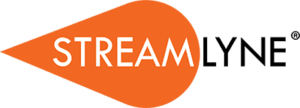
As the world becomes more interconnected, research initiatives are more international than ever. Although collaboration across countries enlarges the scope of scientific discovery, all such projects, data, and intellectual property must be protected against unauthorized foreign influence. Research compliance software is the answer, which helps institutions to obey various rules, monitor international relationships, and ensure good practices. Let’s explore why compliance software is so essential, and what institutions can do to safeguard themselves.
The Growing Concern of Foreign Influence in Research
As an increasing number of institutions collaborate across geographic boundaries, considerations about the partnerships have risen to the surface. For example, governments and funding agencies are paying attention to issues of data security, openness, and compliance with regional laws, in order to avoid risks. Noncompliance with these standards has severe implications for the institutions that fail to meet them, which can include the loss of funding, legal action, and harm to the institution’s reputation.
Impact on Research Institutions
Recently, the U.S. government has expressed some grave concerns about the influence of foreign entities on U.S. institutions and researchers. Chief among the concerns are:
- Lack of disclosure of support from other activities or foreign organizations
- Disclosure of confidential information by peer reviewers
- Significant financial conflict of interest that was not disclosed
- Improper transfer, appropriation, or unlawful transfer of U.S. intellectual property, data or unpublished research findings.
The awareness and concern around potential foreign influence explains why U.S. research institutions must take such strong precautionary measures. And the U.S. is not alone in these actions. For example, the Horizon Europe programme of the European Union also focuses on the transparency and ethics of the partnerships to ensure non-discriminatory behavior, and to fortify the process around the research conducted. These global initiatives reflect the increasing significance of ensuring the integrity of research.
Challenges Institutions Face Regarding Foreign Influence
Although international research partnerships can be exceedingly valuable, and rewarding for all involved, they also present their share of challenges for research institutions. Let’s look at some of the typical scenarios that research institutions contend with:
Threat of Data Leakage
Institutions deal with valuable data that is easily accessible to others in the event of a data breach. Therefore, it is important to have the right measures in place to protect such valuable information. If compliance protocols are not followed, it may result in unauthorized access, which could threaten the research underway, along with its associated funding.
Disclosure of Interest
Working with foreign entities may lead to financial opportunities that have personal benefits. For example, a researcher may have other foreign investments or dealings, and could stand to gain from the outcomes of the research performed. Without strong procedures for detecting such potential risks, and reporting any potential competing interests, research integrity may be compromised.
Intellectual Property (IP) Protection Risks
When collaborating internationally, institutions must anticipate the potential for disputes over intellectual property rights, and come to a mutual agreement. Otherwise, discrepancies in IP laws from one country to the next may lead to misunderstandings. To mitigate this, institutions should establish clear ground rules regarding IP rights, including joint ownership provisions, and methods of enforcement. Otherwise, the research could inadvertently fall into the wrong hands.
Cost of Compliance Management
The management of compliance is often costly in terms of time, money and expertise. Without the right tools, institutions may face the risk of having to divert resources from their core function of research. Or institutions may find themselves bogged down in the administrative process, dissuading them from pursuing interesting collaborations. Research compliance software provides unique solutions to these challenges to help institutions stay protected and compliant. Here’s how:
Automated Compliance Tracking and Documentation
Compliance software facilitates the documentation of partnerships, sources of funding, and other documentation. Automating these processes helps avoid errors and provide a clear compliance record. Tools like those described by Infonetica assist in simplifying the compliance tracking process so that you always know where you stand when it comes to audit readiness.
Risk Assessment and Real-Time Monitoring
Real-time monitoring features flag possible risks from foreign collaboration or funding sources as they happen. This preventive measure enables the institutions to deal with problems before they become violations of the policies.
Efficient Reporting and Data Security
Centralized and secure data storage guarantees that sensitive information is protected. Compliance software also provides the ability to create reports quickly and easily for institutions. This process is streamlined to show transparency, which is becoming more important in the federal scrutiny.
Online COI Management: A Simplified User-Friendly Workflow for Compliance Teams
Compliance software is designed with the user in mind. With the right software, compliance officers and researchers can eliminate redundant tasks and instead concentrate on higher level functions related to their roles.
Streamlyne Research: A Comprehensive Compliance Software Solution
Streamlyne Research provides innovative compliance software for research institutions. Its strong tools, including real time risk assessment, compliance automation, and reporting, gives institutions the ability to meet the standards set by regulators while maintaining their focus on research.
Streamlyne Research has centralized its compliance activities to minimize the burden on institutions, enhance the accuracy and transparency of the compliance process. For instance, it has a simple dashboard that allows the compliance team to track international partnerships and funding sources in real time to detect and address risks before they become serious problems. These tools also help with audits and reporting to make sure that institutions are always ready to prove to the funding agencies that they are in compliance.
The Streamlyne Research eRA is the software trusted by institutions that need to navigate through international partnerships with compliance and confidence.
Conclusion: The Need to Equip Research Institutions with the Right Compliance Software Tools
Foreign influence in research is a serious issue, but it can be managed properly with the right tools at your disposal. The Streamlyne Research Compliance Module simplifies the compliance management process, enabling institutions to concentrate on their research development goals.
To find out more about how Streamlyne Research can benefit your institution, please request a demo to see how our cloud-based software will help you mitigate foreign influence risks with confidence.

